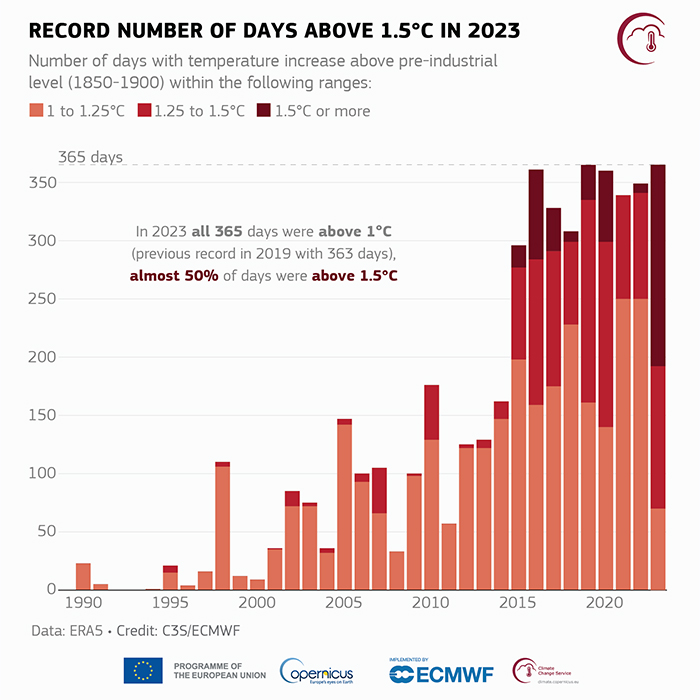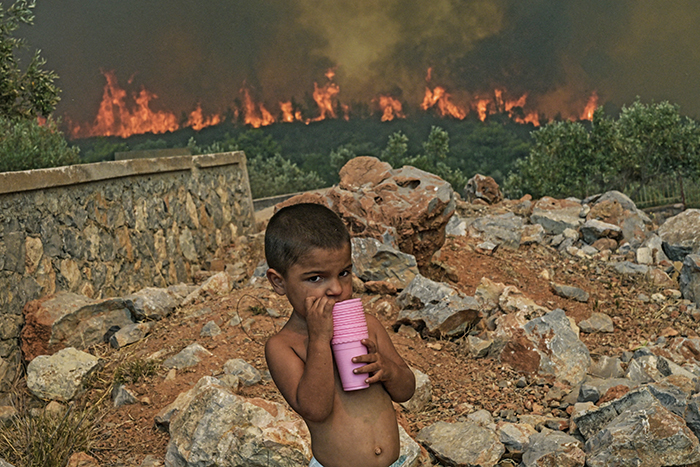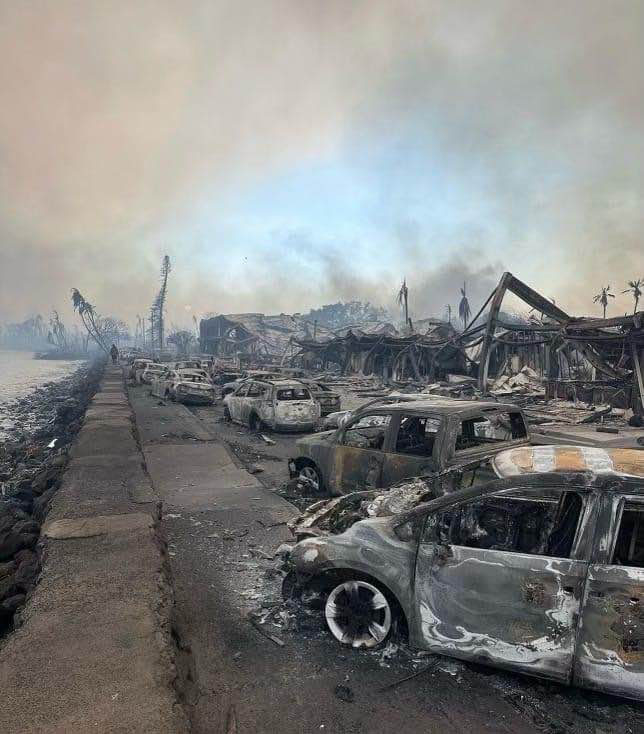Products You May Like
It’s official: 2023 was Earth’s hottest year ever recorded, beating the previous record set in 2016 by a huge margin.
Last year was also the first in which the world was close to 1.5°C (1.48°C) hotter than the pre-industrial average (1850-1900). We are brushing against the threshold scientists urged us to limit long-term warming to.
Some scientists, including former Nasa climatologist James Hansen, predict 2024 will be humanity’s first year beyond 1.5°C. As what were once dire warnings from climate experts become our shared reality, what can you expect?

The 1.5°C temperature target, enshrined in the 2015 Paris agreement, is not shattered on first contact. Most of the climate tipping points scientists fear could send warming hurtling out of control are not expected until Earth is consistently warmer than 1.5°C.
The global average temperature is likely to dip down again once the present El Niño (a warm phase in a natural cycle focused on the equatorial Pacific Ocean) dissipates.
Instead, 2024 could be our first glimpse of Earth at 1.5°C. Here’s what research suggests it will look like for people and nature.

Ecosystems on the brink
Tropical coral reefs are in hot water. These habitats comprise a network of polyp-like animals (related to jellyfish) and colorful algae encased in calcium carbonate. The complex forms they build in shallow water around the Earth’s equator are thought to harbor more species than any other ecosystem.
“Corals have adapted to live in a specific temperature range, so when ocean temperatures are too hot for a prolonged period, corals can bleach – losing the colorful algae that live within their tissue and nourish them via photosynthesis – and may eventually die,” say coral biologists Adele Dixon and Maria Beger (University of Leeds) and physicists Peter Kalmus (Nasa) and Scott F. Heron (James Cook University).
Climate change has already raised the frequency of these marine heatwaves. In a world made 1.5°C hotter, 99 percent of reefs will be exposed to intolerable heat too often for them to recover according to Dixon’s research, threatening food and income for roughly one billion people – not to mention biodiversity.
Coral reefs will earn their reputation as the “canaries in the coal mine” for climate change’s impact on the natural world. As global heating ticks up towards 2°C, the devastation already seen on reefs will become evident elsewhere according to an analysis by biodiversity scientist Alex Pigot at UCL:
“We found that limiting global warming to 1.5°C would leave 15 percent of species at risk of abruptly losing at least one third of their current geographic range. However, this doubles to 30 percent of species on our present trajectory of 2.5°C of warming.”
Hundreds of Little penguins lie dead, their tiny frames emaciated.
They had searched desperately for food but died from prolonged starvation, as ocean heating drove fish away.
It’s not insults from CC deniers that grieves me, it’s the stark reality of climate change. pic.twitter.com/AGxjhlAxBP
— Tom (@DrTOMontgomery) May 14, 2023
Heat beyond human tolerance
Above 1.5°C, humanity risks provoking heatwaves so intense they defy the human body’s capacity to cool itself.
Intense heat and humidity have rarely conspired to create “wetbulb” temperatures of 35°C. This is the point at which the air is too hot and humid for sweating to cool you down – different from the “drybulb” temperature a thermometer reports.
Earth’s rising temperature could soon change that according to climate scientists Tom Matthews (Loughborough University) and Colin Raymond (California Institute of Technology).
“Modelling studies had already indicated that wetbulb temperatures could regularly cross 35°C if the world sails past the 2°C warming limit … with The Persian Gulf, South Asia and North China Plain on the frontline of deadly humid heat,” they say.
But different areas of the the world are warming at different rates. In a world that is 1.5°C hotter on average, temperatures in your local area may have actually risen by more than that.
To account for this, Matthews and Raymond studied records from individual weather stations worldwide and found that many sites were closing in much more rapidly on the lethal heat and humidity threshold.
“The frequency of punishing wetbulb temperatures (above 31°C, for example) has more than doubled worldwide since 1979, and in some of the hottest and most humid places on Earth, like the coastal United Arab Emirates, wetbulb temperatures have already flickered past 35°C,” they say.
“The climate envelope is pushing into territory where our physiology cannot follow.”

How long do we have?
Species extinctions and deadly heat become more likely after 1.5°C. So do catastrophic storms and collapsing ice sheets.
For a chance to avoid these horrors, we must eliminate the greenhouse gas emissions heating Earth and that means rapidly phasing out coal, oil and gas, which account for 80 percent of energy use worldwide.
How fast? According to the latest estimate, published in October, very fast indeed.
“If humanity wants to have a 50-50 chance of limiting global warming to 1.5°C, we can only emit another 250 gigatonnes (billion metric tonnes) of CO₂,” say climate and atmospheric scientists Chris Smith at the University of Leeds and Robin Lamboll at Imperial College London.
“This effectively gives the world just six years to get to net zero.”![]()
Jack Marley, Environment + Energy Editor, The Conversation
This article is republished from The Conversation under a Creative Commons license. Read the original article.
